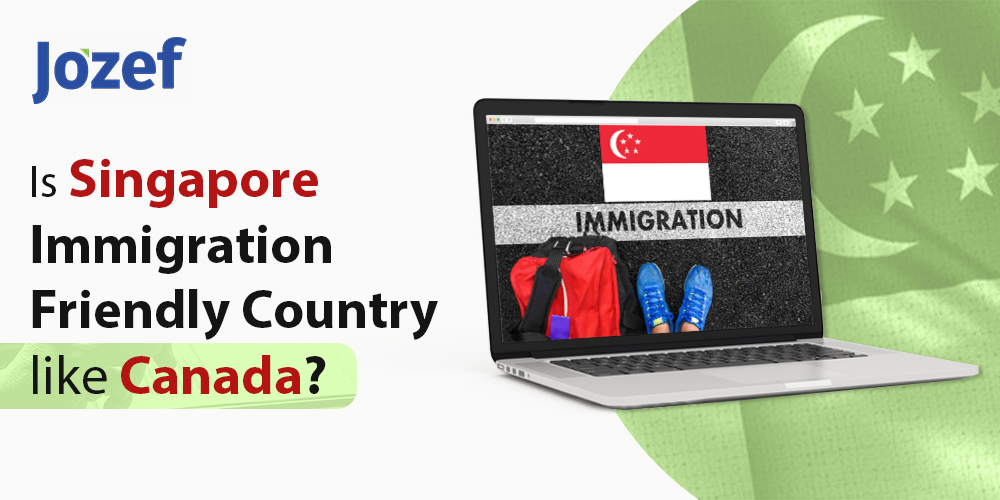Singapore, as one of the world’s few city-states, takes pride in its identity as a multiracial and multicultural society. Its cultural heritage is what defines its unique identity—a harmonious blend of diverse cultures coexisting in one congenial space. Situated on the southern tip of Malaysia, this island nation boasts a citizen population consisting of four major ethnic groups: Chinese (74.3%), Malays (13.5%), Indians (9%), and others(3.2%), where “Others” refers to Eurasians. Notably, Eurasians stand for a community with mixed European and Asian heritage.
Preserving social cohesion among these four diverse groups is a paramount goal for the Singapore government, and it is achieved through legal provisions promoting racial harmony. However, the government’s immigration policies, tailored to specific racial categories, frequently garner attention and provoke discussion.
While these policies might appear unusual or even discriminatory to outsiders, they have deeper historical and social reasons that warrant exploration. In this blog post, we will delve into the reasons behind Singapore’s race-specific immigration policies and the rationale that underpins them.
Historic context
A unique demographic composition has shaped Singapore’s immigration policies over the years. Here’s an overview.
Indigenous (Orang Laut) Peoples: Before colonization, Singapore was inhabited by indigenous Malay communities. The island was part of the historical Malay world and was called Temasek (Sea Town).
Colonial Period: The British established a trading port in Singapore in the early 19th century. As a result, people from various ethnic backgrounds, including Malays, Chinese, Indians, and Eurasians, settled on the island. Policies implemented by the colonial administration influenced ethnic composition.
Post-Independence: Singapore gained independence in 1965, and the government, led by the People’s Action Party (PAP), prioritized racial harmony. Their immigration policies aimed to ensure a balanced mix of the four ethnic groups in Singapore.
Social cohesion
Singapore’s government places a strong emphasis on maintaining a balance among its ethnic groups, to foster social cohesion and mitigate the risk of ethnic tensions and conflicts. Strategic control of immigration based on race is seen as a measure to prevent demographic imbalances that might otherwise lead to unrest or marginalization of specific ethnic groups. This approach reflects the government’s commitment to creating a harmonious and inclusive society where diverse communities coexist with shared understanding and respect.
Economic stability
Singapore’s small land size and limited resources have prompted a strategic emphasis on its economic stability. The government recognizes that maintaining racial harmony is paramount to attracting foreign investments, promoting tourism, and creating a stable environment for its citizens. The government’s careful management of immigration based on race is aimed at preventing economic disruptions that could arise from social tensions. A stable and cohesive society is considered essential for maintaining a favourable economic environment.
Lessons from the past
Singapore, which experienced ethnic tensions leading to its separation from Malaysia, remains mindful of what it has learned from its past. This separation serves as a poignant reminder to manage ethnic diversity with utmost care. A race-specific immigration policy is considered a safeguard by the Singaporean government to prevent recurrence of past mistakes and maintain social harmony among the diverse ethnic groups.
Critics and challenges
Despite the Singapore government’s intentions, race-specific immigration policies have encountered criticism, both domestically and internationally. Critics argue that these policies may be viewed as discriminatory and could unintentionally result in unfair treatment based on ethnicity. Additionally, such policies are expected to hinder Singapore’s ability to attract the talent and skills needed to remain competitive globally.
In conclusion,
Singapore’s race-specific immigration policies are shaped by historical, social, and economic factors. The government’s focus on maintaining social cohesion, preserving cultural identity, and ensuring economic and social stability has led to the implementation of immigration policies tailored to specific racial categories. While these policies aim to balance ethnic groups and prevent potential tensions, they have faced criticism for being perceived as discriminatory and potentially hindering the attraction of global talent.





